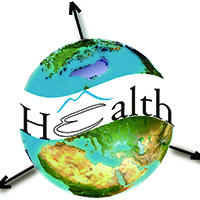Place and health infrastructure in the Gulf Cooperation Council: A systematic scoping review of GIS applications in health

All claims expressed in this article are solely those of the authors and do not necessarily represent those of their affiliated organizations, or those of the publisher, the editors and the reviewers. Any product that may be evaluated in this article or claim that may be made by its manufacturer is not guaranteed or endorsed by the publisher.
Authors
The rising burden of non-communicable diseases is taxing health systems globally. Using data science and information systems is necessary to support public health practices. Geographic Information Systems (GIS) are key to inform and help guide public health policies related to place (i.e. location or where one lives) and how it affects health. Despite the increasing use of GIS for public health globally, its applications to health in the Gulf Cooperation Council (GCC) states remains largely unknown. This systematic scoping review aimed to uncover how GIS has been used in the GCC states to understand place and health. A comprehensive search of the literature was performed in PubMed, Scopus, Science Citation Index Expanded, ScienceDirect, Embase, IEEE Xplore, and ACM Digital Library during June 2020. All journal articles involving the use of GIS for human health applications in the GCC states published in English in peerreviewed scientific journals were considered. After removing duplicates and applying eligibility criteria, qualitative content analysis was performed for 24 of 630 studies. GIS uses in the GCC states were categorized as health access and planning (n=9), health risk analysis (n=8), disease surveillance (n=6) and community health profiling (n=1). The majority of the uncovered evidence in this study focused on the Kingdom of Saudi Arabia. The results of this study indicate a deficiency of published evidence regarding the use of GIS in support of public health in other GCC states. This stands to compromise planning and strategic decision making in health risk analysis, disease surveillance, community health profiling, health services provision and health interventions.
How to Cite

This work is licensed under a Creative Commons Attribution-NonCommercial 4.0 International License.
PAGEPress has chosen to apply the Creative Commons Attribution NonCommercial 4.0 International License (CC BY-NC 4.0) to all manuscripts to be published.













